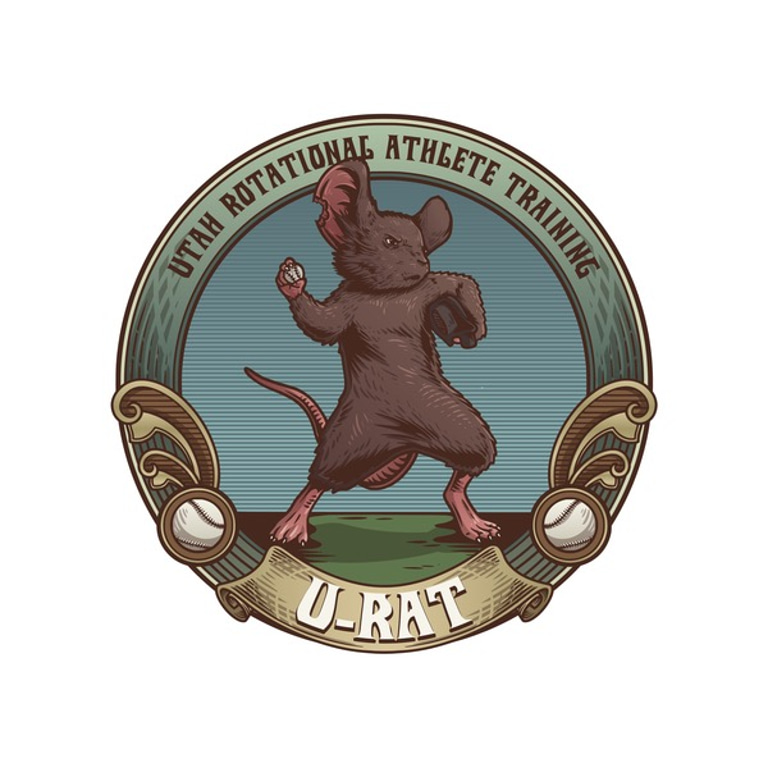The Pelvis and it's Velo Potential
How the pelvis is the key to velocity development


If you're a pitcher grinding through the off-season, you've probably heard me hammer home one truth: velocity isn't just about your arm—it's about the kinetic chain firing like a well-oiled machine. In my Pitching Performance Philosophy Manual, I break down hip-shoulder separation and kinematic sequencing as non-negotiables for generating rotational power. But let's get real—how much does that actually move the needle on your fastball speed?
A study from the Journal of Strength & Conditioning Research (March 2023) drops the mic on this: trunk rotation velocity alone explains 25% of your ball velocity variability. Even better? It's driven by pelvis-trunk "axial dissociation" (fancy talk for that explosive hip-shoulder lag), and optimizing it can boost your velo without extra stress on your shoulder or elbow.
This isn't theory—it's data from 29 high school and college pitchers (ages 15–19).
The Science: What the Data Says
Researchers tracked fastballs from 29 young arms, focusing on three key metrics:
- Peak Pelvis Velocity: 596°/s on average, hitting max speed just 12% into the stride-to-release phase.
- Peak Trunk Velocity: 959°/s, peaking later at 36% of the phase—this was the big predictor of ball speed (p=0.002).
- Hip-Shoulder Separation at Foot Contact: Averaged 50° (with a 12° spread), explaining 17% of trunk speed alone.
Key Takeaway #1: Trunk speed directly correlates to velo, but it's built on pelvis drive and separation. Combine those three factors? They explain 55% of trunk rotation variability (p<0.001). No arm metrics needed— this is lower-body and core magic.
Key Takeaway #2: Timing matters. If your pelvis peaks too early or late, you leak energy. The study shows early pelvis rotation (right after foot strike) sets up that whip-like trunk snap for max exit velo.
And for injury nerds like me? This screams health benefits. Better dissociation means less compensatory torque on the throwing arm—aligning perfectly with my pyramid approach in the manual (Level 1 stability → Level 3 rotational power). Pitchers who nail this stay on the mound longer, racking up innings without the IL drama.
(Pro Tip: If you're visual, imagine this as a simple kinematic sequence graph—pelvis leads, trunk follows, arm whips through. I'll drop a custom URAT infographic on @uratbaseball this week.)
How to Train It: URAT-Style Drills for Immediate Gains
Don't just read this—*apply it*. Here's how we build pelvis-trunk power in our month-long programs. Start with 2–3 sessions/week, film yourself, and track velo gains.
1. Pelvis Drive Activation (Build That Early Peak)
- Drill: Wall Drill + Anterior Pelvis Tilt (from my Focus Band process). Stand against a wall, feet shoulder-width, and practice tilting your pelvis forward while pressing the ground. Hold 3 seconds, 3 sets of 8 reps/side.
- Why? Trains explosive ground force into rotation—mimics the study's 12% timing window.
2. Trunk Rotation Whip (Maximize That 959°/s Peak)
- Drill: Rocker Drill. Rock back into load, pause at hip-shoulder separation (aim for 40–50°), then explode through trunk rotation.
- Why? Builds the lag-to-release timing that drives 25% of your velo variance and allows for learning to time hip and shoulder rotation.
3. Full Kinematic Sequence Check (Tie It All Together)
- Drill: Patterning Work: Increasing speed and difficultly by adding and removing segments to focus on timing hip and shoulders separation / rotation timing in a standing or leg lift position.
- Why? Ensures pelvis leads trunk by 20–30% of the phase, per the data.
At Utah Rotational Athlete Training, we're obsessed with building starters who lead in Ks, innings, and health—not relievers nursing tweaks. This research? It validates everything we do: biomechanics that pop velo through efficient chains, strength pyramids that fortify the core, and in-game tactics that turn separation into strikeouts.
Our month-long plans? They're custom blueprints blending these drills with your evals—remote or in-person, Utah or out-of-state. Clients see 2–4 mph gains, drop BB% by 20%, and stay mound-ready all season. Don't grind the off-season just to flame out in April.
Ready to own the mound? Spots are filling for December starts—grab your biomechanics eval + custom plan today. Head to uratbb.com or DM @uratbaseball for a quick chat. Let's turn data into dominance.
Jordan Oseguera Founder, URAT uratbb.com | @uratbaseball
